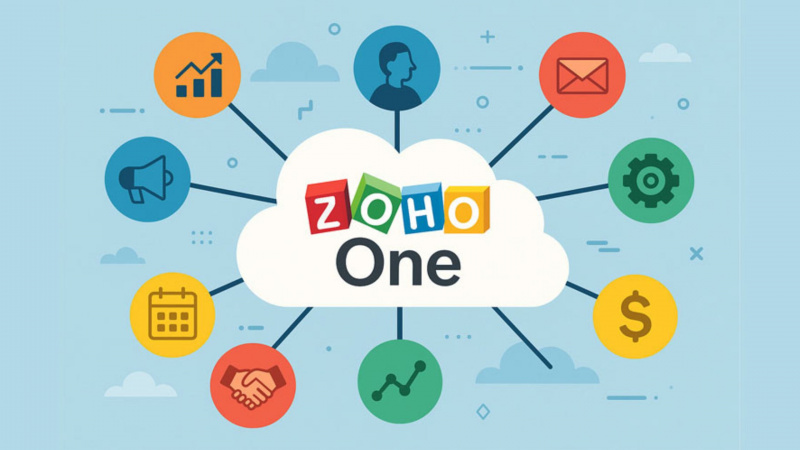The Cloud Kitchen Business Model: Revolutionizing the Food Industry
The cloud kitchen business model, also known as a ghost kitchen or virtual kitchen, has transformed the way food is prepared and delivered to customers. This in
- by B2B Desk 2024-12-12 09:46:56
The cloud kitchen business model, also known as a ghost kitchen or virtual kitchen, has transformed the way food is prepared and delivered to customers.
The cloud kitchen business model, also known as a ghost kitchen or virtual kitchen, has transformed the way food is prepared and delivered to customers. This innovative model is gaining rapid traction in the food service industry, particularly due to the growing demand for online food delivery services and the increasing use of food delivery apps like Uber Eats, Zomato, and Swiggy. In this article, we will dive deep into the cloud kitchen business model, explore its advantages, and address some frequently asked questions to help you understand this business's dynamics.
What is the Cloud Kitchen Business Model?
The cloud kitchen business model refers to a delivery-only food service that operates without a traditional dine-in space. It operates exclusively through online orders, leveraging delivery platforms and its own website to reach customers. Cloud kitchens minimize overhead costs associated with physical infrastructure, allowing businesses to focus solely on food preparation and delivery.
Key characteristics of the cloud kitchen business model include:
- No physical storefront: Cloud kitchens do not require customer-facing dining areas.
- Cost-effective: Reduced rental costs, staff, and utilities contribute to the lower overall investment required.
- Focus on delivery: These kitchens serve customers through food delivery apps, websites, and phone orders.
- Multiple brands from one kitchen: Cloud kitchens can operate multiple brands or cuisines under a single roof.
The cloud kitchen business model caters to a growing number of customers who prefer ordering food online. This model is ideal for entrepreneurs who want to enter the food industry without the capital investment and overhead required to open a traditional restaurant.
How Does the Cloud Kitchen Business Model Work?
The cloud kitchen business model operates through a simple yet effective structure. Here’s a step-by-step breakdown of how it works:
- Online Orders: Customers place their orders via food delivery apps or the cloud kitchen's own website.
- Order Preparation: The kitchen prepares the order in its facility, often shared by multiple brands or cuisines.
- Delivery: The prepared food is handed off to a delivery partner or a third-party logistics provider for delivery.
- Customer Feedback: After delivery, customers can rate and review their experience, which helps improve service quality.
This model eliminates the need for a front-of-house staff, reducing costs and allowing operators to focus solely on efficient cooking and timely delivery.
Advantages of the Cloud Kitchen Business Model
The cloud kitchen business model presents several advantages for both entrepreneurs and consumers, including:
1. Lower Operational Costs
Without the need for prime real estate or a front-of-house service team, the cost structure for cloud kitchens is significantly lower than that of traditional restaurants. The savings can be redirected into marketing, technology, and operational efficiency.
2. Scalability and Flexibility
The cloud kitchen model offers great scalability. A business can easily open multiple locations or expand into new markets without worrying about the complexity of opening new dine-in restaurants. Additionally, brands can experiment with different cuisines or concepts without the financial burden of a physical storefront.
3. Focus on Delivery
In the cloud kitchen business model, the focus is entirely on the preparation and delivery of food. This specialization allows kitchens to perfect their cooking process, speed up order fulfillment, and improve food quality over time.
4. Data-Driven Decisions
Cloud kitchens rely heavily on data analytics to optimize their operations. From analyzing customer preferences to optimizing delivery routes, data allows operators to fine-tune their services and offer personalized experiences to customers.
Challenges of the Cloud Kitchen Business Model
Despite its advantages, the cloud kitchen business model does face some challenges:
1. Dependence on Delivery Platforms
Most cloud kitchens rely heavily on third-party delivery platforms to reach customers. This reliance can result in higher commission fees and limited control over customer relationships.
2. Intense Competition
The online food delivery space is highly competitive, with numerous players vying for consumer attention. Cloud kitchens need to differentiate themselves through unique branding, superior food quality, and efficient delivery to stand out.
3. Logistical Issues
Timely and safe delivery is crucial to the success of any cloud kitchen. Delays, temperature issues, or mishandling during transit can result in poor customer experiences and negative reviews.

POPULAR POSTS
Pine Labs IPO 2025: Listing Date, Grey Market Premium, and Expert Outlook
by Shan, 2025-11-05 09:57:07
India’s Largest Unicorn Startups in 2025: Rankings, Valuations, and Trends
by Shan, 2025-09-18 10:32:48
Swiggy Launches Toing App in Pune to Serve Affordable Food Delivery — What It Means for the Market
by Shan, 2025-09-16 12:29:08
Trending Startup Ideas for 2025: Where Innovation Meets Opportunity
by Shan, 2025-09-05 11:56:43
19 Best Business Ideas to Start in India 2025: From Low Investment to High Demand
by Shan, 2025-09-03 10:58:15
Razorpay Business Model Explained: How the Fintech Giant Makes Money in India
by Shan, 2025-08-05 12:10:28
How CRED Reimagined Credit Card Rewards into a Billion-Dollar Fintech Empire
by Shan, 2025-08-04 12:28:03
RECENTLY PUBLISHED

Loan EMIs to Drop as RBI Slashes Repo Rate - Full MPC December 2025 Highlights
- by Shan, 2025-12-05 11:49:44

The Agentic Revolution: Why Salesforce Is Betting Its Future on AI Agents
- by Shan, 2025-11-05 10:29:23

Top 10 Insurance Companies in India 2026: Life, Health, and General Insurance Leaders Explained
- by Shan, 2025-10-30 10:06:42

OpenAI Offers ChatGPT Go Free in India: What’s Behind This Big AI Giveaway?
- by Shan, 2025-10-28 12:19:11

Best Silver Investment Platforms for 2025: From CFDs to Digital Vaults Explained
- by Shan, 2025-10-23 12:22:46





 Subscribe now
Subscribe now 